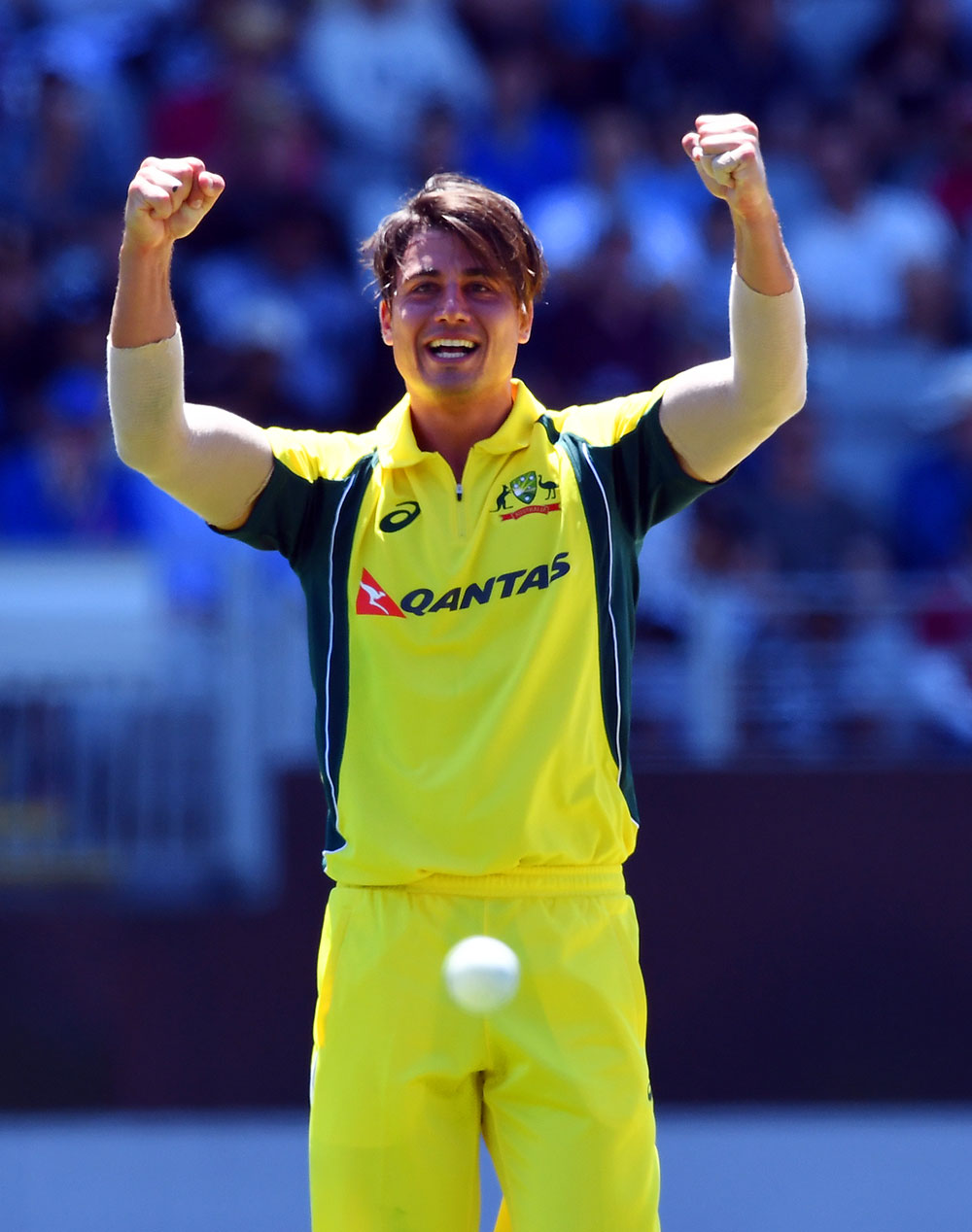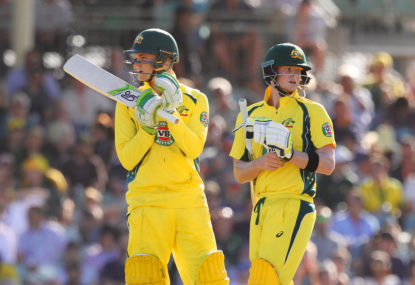Australia ended their long limited overs tour of India with a poor 2-5 win-loss record but amid this disappointing performance were a number of bright spots for the tourists.
Here are three key talking points from the five ODIs and three T20s in India.
Marcus Stoinis has pinched Glenn Maxwell’s ODI spot
Stoinis came into Australia’s ODI side as a like-for-like replacement for fellow WA all-rounder Mitch Marsh. But over the course of seven ODIs this year, during which Stoinis was outstanding, he has effectively stolen the spot of Glenn Maxwell.
Australia cannot accommodate Maxwell, Stoinis and Marsh in the same line-up, and Maxwell is the most likely to make way.
I expect Marsh, once fully fit, to come straight back into the ODI side thanks to his fine record for Australia. Not only does Marsh have impressive numbers – a batting average of 35 and bowling average of 36 – but he’s also a proven match winner, having won six man-of-the-match awards during his 48-match career.
That’s a ratio of one MOM award every eight games, which is extremely impressive when you compare it to the ratios of England all-rounder Ben Stokes (one per 15 matches) or Australian skipper Steve Smith (one per 15 matches).
Marsh is not currently able to bowl but is in cracking touch for WA in the domestic 50-over competition, with 134 runs for just one dismissal and a blistering strike rate of 110. On batting alone, he warrants a position in Australia’s ODI team ahead of Maxwell, who has averaged just 22 with the blade in his past 20 ODIs.
Stoinis, meanwhile, deserves a long run in the ODI team after displaying a rare mix of composure and dynamism with the bat. His ability to rebuild after a collapse, or blaze when his team’s on top, is exactly what every ODI team wants from their number six.
Stoinis’ bowling remains a work in progress but, with Marsh in the XI, that pair would only need to share 10 overs per match, along with off spinner Travis Head. Stoinis bowled much better than his figures across this tour suggested.
He finished the series on a positive note with the ball by taking 1-20 from four overs in a very tidy display in the second T20I.

Handscomb can steady Australia’s ODI middle order
Here’s a stat you probably haven’t seen before – In the 27 List A matches Peter Handscomb has played as a wicketkeeper, he has piled up an 904 runs at 50. Handscomb’s recent form is even better, having hammered 480 runs at 69 including two tons in the eight List A matches he’s played as a keeper this year.
With David Warner and Aaron Finch opening, and Marcus Stoinis and Mitch Marsh down the order, Australia’s first-choice ODI XI would have more than enough firepower.
Australia’s key batting weakness in ODIs has been the lack of stability in its middle order.
Too often in recent times the top order have set a good platform only for the middle order to subside. With Smith at three and blossoming youngster Travis Head at four, Australia look solid. But they would benefit from a third reliable, accumulator-style batsman at five, someone who does not rely on big shots to keep the scoreboard moving.
The best option would be to hand this number five position, as well as the gloves, to Handscomb. Matthew Wade patently cannot remain in the ODI line-up after averaging just 26 with the bat over the past two calendar years.
Australia need a keeper to bat somewhere between five and seven in their ODI line-up. Former Test gloveman Peter Nevill is ill-suited to batting down the order, having averaged just 19 with the bat over the past three domestic 50-over tournaments, while batting at either five or six in each match.
Tim Paine has a fine List A record but his age is an issue. Australia need to start building a team to win the 2019 World Cup and Paine will be pushing 35 years old by the time that tournament rolls around.
Handscomb’s keeping, admittedly, is not to the same standard as Nevill or Paine. But from what I’ve seen of his glovework at domestic level he is no worse than Wade and surely would improve as he gets more time behind the stumps.

What is undoubted is that Handscomb is a dominant batsman when he keeps, as evidenced by the stats I listed above. With Wade having flopped, and questions marks over Paine and Nevill’s suitability for the ODI side, Australia should offer Handscomb a long run with the gloves. If this move doesn’t come off, they can always fall back to Paine or Nevill.
If it does, they will have finally plugged a gaping hole which has existed in the ODI side for more than two years now.
Hardik Pandya is a superstar-in-the-making
Stokes is the most-hyped all-rounder in world cricket but, in the ODI format, India’s Hardik Pandya is already his equal just 26 matches into his career.
At 24 years old, Pandya is two years younger than Stokes and here are their respective ODI averages after 26 matches:
Pandya – batting average of 40 (strike rate 121) and bowling average of 34.
Stokes – batting average of 16 (strike rate 79) and bowling average of 37.
Pandya is so far advanced on Stokes at that same stage of their ODI careers that there really is no comparison. Leading into Australia’s tour of India, I was well aware of the extraordinary hitting power of Pandya.
What wasn’t apparent to me was his versatility. Over the course of the ODI series, Pandya underlined that he has multiple gears to his batting.
In the first ODI, Pandya came out and blazed 83 from 66 balls, a knock which included five sixes. Then in the third ODI he steered India towards a successful chase with a more restrained innings of 78 from 72 balls.
In both innings he had patches where his scoring rate slowed due to good bowling and Pandya remained patient and waited for the game to open up for him.
Overall, though, it was his phenomenal ball striking against spin which left the strongest impression. The ease with which he dispatches slow bowlers for six is truly uncommon.
Meanwhile, he did a solid job with the ball for India, taking six wickets at 31 for the series.
He has good pace, pushing the speed gun as high as 142kmh, plus a nice change of pace and a decent bouncer. To top it all off he is an athletic and skilful fielder. Pandya’s potential in ODIs and T20s is gigantic.































































































